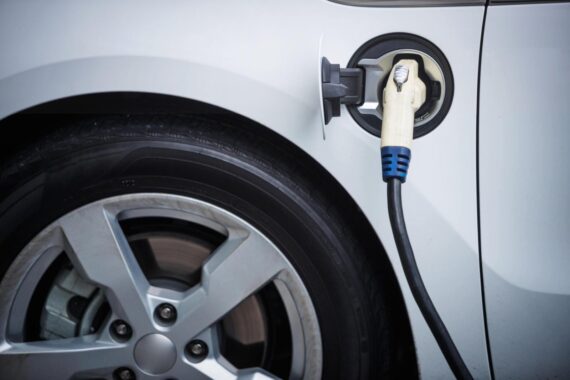Last Updated on 4 months
The Road to Fuel Efficiency
The journey towards achieving fuel efficiency in vehicles is complex and multifaceted. It encompasses a wide array of factors, ranging from technological advancements in engine design to the adoption of sustainable driving practices. Fuel efficiency aims to save vehicle operators’ costs and reduce vehicular emissions’ environmental impact, which is crucial in global efforts to combat climate change.
The Importance of MPG in Vehicle Operations
Miles Per Gallon (MPG) is a critical metric in vehicle operations, serving as a vital indicator of a vehicle’s fuel efficiency and overall performance. This measure impacts the cost-effectiveness of vehicle operations and has broader implications on environmental sustainability.
This section delves into MPG’s significance, exploring how it influences everything from consumer vehicle choices to global environmental policies. Understanding MPG’s impact is essential for consumers and manufacturers in the ever-evolving landscape of automotive technology and environmental awareness.

What is MPG?
For Miles Per Gallon, MPG measures how far a vehicle can travel on a gallon of fuel. This metric is crucial as it directly correlates with the cost of operating the vehicle and its environmental impact.
Economic and Environmental Impact
Higher MPG ratings indicate that a vehicle can travel further on the same amount of fuel, leading to direct cost savings for the user. On the environmental front, cars with higher MPG produce fewer emissions per mile, contributing to lower greenhouse gasses and pollutants.
Influence on Consumer Choices
MPG figures significantly influence consumer purchasing decisions. With rising fuel costs and growing environmental concerns, consumers increasingly opt for vehicles that offer better fuel economy.
Government Regulations and Standards
Governments worldwide have implemented stricter fuel economy standards, compelling manufacturers to innovate and produce more fuel-efficient vehicles. These regulations aim to reduce the overall carbon footprint of the automotive sector.
Tires: The Unsung Heroes of Fuel Economy
When enhancing vehicle fuel efficiency, the spotlight often falls on advanced engines, hybrid technologies, and aerodynamic designs. However, an unsung hero in this narrative plays a crucial role yet usually goes unnoticed—tires. Tires are fundamental components of any vehicle, and their impact on fuel economy is substantial, albeit frequently underappreciated. This section delves into the pivotal role tires play in fuel efficiency, exploring how these round rubber fixtures contribute significantly to vehicles’ overall performance and environmental footprint.
Tires influence a vehicle’s fuel consumption more than one might initially think. From their construction and tread design to their maintenance and proper usage, every aspect of a tire can impact how much fuel a vehicle consumes. In this in-depth exploration, uncover how tires contribute to fuel efficiency, shedding light on why they deserve more attention in the conversation about eco-friendly and cost-effective transportation.
Role in Fuel Efficiency
Tires play a pivotal role in determining a vehicle’s fuel efficiency. The resistance a tire encounters while rolling, known as rolling resistance, directly impacts the vehicle’s fuel consumption.
Advances in Tire Technology
Significant advancements in tire technology have focused on reducing rolling resistance. These include developing new materials and tread designs that enhance fuel efficiency without compromising safety or durability.
Proper Tire Maintenance
Maintaining proper tire pressure is essential for optimal fuel economy. Under-inflated tires increase rolling resistance and, consequently, fuel consumption. Regular checks and keeping the recommended tire pressure can significantly improve MPG.
Choosing the Right Tires
Selecting tires that are designed for fuel efficiency can make a noticeable difference. Low-rolling resistance tires are designed to improve MPG, offering a cost-effective way to enhance fuel economy.
Consumer Awareness
Educating consumers about the impact of tires on fuel efficiency is crucial. Awareness about choosing the right tires and maintaining them properly can lead to more informed decisions, contributing to better fuel economy and reduced environmental impact.
Unraveling Tire Types and Their Fuel Impacts
The role of tires in affecting a vehicle’s fuel efficiency is often overlooked, yet it is significant. Different types of tires can have varying impacts on how much fuel a car consumes. This exploration into the world of tires will unravel the distinctions between various tire types and their respective impacts on fuel economy.
Comparing Standard and Eco-Friendly Models
Comparing standard and eco-friendly tire models is crucial for greater fuel efficiency. This section delves into the distinctions between these two types of tires, exploring how their design and construction impact fuel consumption and overall vehicle performance.
Standard Tires
Standard tires, typically designed for general performance, prioritize durability, grip, and handling. However, they may not be optimized for fuel efficiency. The material composition and tread design in standard tires can increase rolling resistance, which requires more energy (fuel) to maintain motion.
Eco-Friendly Models
Eco-friendly or low-rolling resistance tires are engineered specifically to reduce the energy lost through tire deformation during driving. These tires use advanced rubber compounds and tread designs to minimize rolling resistance. As a result, they require less energy to move, improving the vehicle’s fuel efficiency.
Efficiency Comparisons
Studies have shown that eco-friendly tires can improve a vehicle’s fuel economy by approximately 2-4%. Over the tires’ lifetime, this can translate to significant fuel savings and reduced carbon emissions.
The Science Behind Tread Patterns and Fuel Savings
The intricate science of tread patterns is pivotal in a tire’s fuel-saving capabilities. This segment explores the technical aspects of how various tread designs contribute to fuel efficiency, offering insights into how these patterns affect a vehicle’s fuel consumption and road performance.
Tread Design
The tread pattern on a tire plays a crucial role in its performance. Traditional treads are designed to provide grip but can also increase friction and rolling resistance. In contrast, eco-friendly tires often feature a unique tread design that balances the need for grip with the need to reduce resistance.
Material Innovations
Advancements in tire technology have led to new materials that reduce tires’ weight and rolling resistance without compromising safety. These materials include silica-based compounds and innovative synthetic rubbers that offer better fuel efficiency.
Aerodynamics
Some eco-friendly tires also incorporate design elements that improve the vehicle’s aerodynamics. These design tweaks can reduce fuel consumption, particularly at higher speeds where air resistance becomes more significant.
Impact on Fuel Economy
The impact of tread patterns and tire materials on fuel economy is substantial. By reducing rolling resistance, these tires can decrease fuel consumption, leading to both economic benefits for the driver and environmental benefits for the planet.
Understanding the science behind these tire types and their impact on fuel savings is crucial for consumers looking to make informed decisions about their vehicle’s environmental footprint and operational costs.
The Art of Tire Maintenance for Optimal MPG
Maintaining tires in optimal condition is an art that significantly contributes to a vehicle’s fuel efficiency. Proper tire maintenance not only extends the lifespan of the tires but also ensures the car operates at peak efficiency, particularly in terms of miles per gallon (MPG). This article delves into the crucial aspects of tire maintenance and how they relate to maximizing fuel economy.
Routine Check-Ups: A Small Step for Long-Term Benefits
Regular tire check-ups are a critical yet often overlooked aspect of vehicle maintenance. This section highlights how these routine inspections contribute significantly to a tire’s long-term health and efficiency, ultimately impacting fuel economy and safety.
Importance of Regular Inspections
Regular tire check-ups are essential for identifying issues like tread wear, damage, or uneven wear patterns. Early detection of these problems can prevent more significant issues, ensuring consistent fuel efficiency.
Checking Tread Depth
The tire tread depth directly impacts the vehicle’s grip and handling, affecting fuel consumption. Worn-out tires increase rolling resistance and, consequently, fuel usage. Regularly checking and maintaining the appropriate tread depth is vital for optimal MPG.
Dealing with Damages
Damages such as cuts, bulges, or punctures can compromise tire integrity and performance. Prompt repairs or replacements are crucial to fuel efficiency and overall vehicle safety.
The Inflation Equation: Balancing Pressure for Performance
The correct tire pressure is a delicate balance that affects a vehicle’s performance and fuel efficiency. This segment explores the crucial role of maintaining optimal tire pressure, examining its direct influence on fuel consumption and tire longevity.
Impact of Tire Pressure on Fuel Efficiency
Proper tire inflation is crucial for fuel efficiency. Under-inflated and over-inflated tires can increase rolling resistance, thereby reducing MPG. Under-inflated tires create more drag, while over-inflation can lead to uneven wear and reduced traction.
Recommended Pressure Levels
Vehicle manufacturers specify optimal tire pressure levels for a reason. Adhering to these recommended levels ensures that the tires balance grip, wear, and fuel efficiency.
Regular Pressure Checks
Tire pressure should be checked at least once a month and before long trips. Temperature changes can affect tire pressure, making regular checks even more crucial.
Alignment and Rotation: The Longevity Factors
Proper alignment and regular rotation are vital to extending tire life and maintaining consistent fuel efficiency. This introduction sets the stage for a deeper understanding of how these maintenance practices contribute to tire longevity and significantly optimize a vehicle’s MPG.
Importance of Wheel Alignment
Proper wheel alignment is essential for even tire wear. Misaligned wheels can cause uneven wear, reducing tire life and negatively impacting fuel efficiency. Regular alignment checks can prevent this.
Benefits of Tire Rotation
Rotating tires at manufacturer-recommended intervals ensures even tire wear. This not only extends the life of the tires but also maintains consistent fuel efficiency. Uneven wear can lead to increased rolling resistance and, thus, higher fuel consumption.
Long-term Impact on MPG
Consistent alignment and rotation practices contribute significantly to maintaining a vehicle’s MPG. By ensuring even wear and optimal tire condition, these practices keep the car running efficiently over its lifespan.
Technological Innovations Shaping Tomorrow’s Tires
The tire industry is on the cusp of a revolution driven by technological innovations that promise to redefine how we think about and use tires. These advancements are not just about enhancing tire performance; they are about meeting the evolving demands of fuel efficiency, sustainability, and changing transportation needs.
Revolutionizing Rubber: Compounds for the Future
Developing new rubber compounds represents a significant leap forward in tire technology. This section explores cutting-edge materials and chemical engineering breakthroughs, setting the stage for the next generation of tires. These innovations aim to deliver improved durability, better fuel efficiency, and reduced environmental impact.
Advanced Rubber Compounds
Modern tire manufacturers are experimenting with various synthetic rubber compounds and additives to enhance performance. These new compounds are designed to offer better grip, lower rolling resistance, and increased durability.
Sustainable Materials
There’s also a growing focus on sustainability. Eco-friendly materials, such as bio-based rubbers and recycled materials, are being integrated into tire manufacturing. These materials reduce the reliance on non-renewable resources and help minimize the environmental footprint of tire production.
Performance Enhancements
These advanced compounds are not just about being eco-friendly; they significantly enhance tire performance. Improved wear characteristics mean longer tire life, translating to cost savings for consumers and fewer tires ending up in landfills.
The Era of Aerodynamics in Tire Design
Aerodynamics is becoming a critical factor in tire design, marking a new era in the tire industry. This section delves into how aerodynamic principles are applied to tire design to improve fuel efficiency and overall vehicle performance, particularly for electric and high-performance vehicles.
Aerodynamic Tread Patterns
Innovative thread designs are being developed to reduce air resistance, which can substantially affect fuel consumption, especially at higher speeds. These designs aim to channel air more efficiently around the tire, minimizing drag.
Impact on Electric Vehicles
Aerodynamic tires can significantly extend the range for electric vehicles, where efficiency is paramount. This is especially important as the automotive industry shifts towards electrification.
Holistic Vehicle Design Integration
Aerodynamic tire design is increasingly being integrated into the broader context of vehicle design. This holistic approach ensures that the tires complement the vehicle’s aerodynamic profile, enhancing overall efficiency and performance.
Steering Towards Eco-Friendly Driving
In an era where environmental conservation is paramount, eco-friendly driving practices have become crucial. These practices reduce a vehicle’s carbon footprint and enhance fuel efficiency, providing economic benefits. This article explores various strategies and techniques drivers can adopt to promote more environmentally friendly and fuel-efficient driving habits.
Navigating Fuel Efficiency: Smart Driving Techniques
Adopting clever driving techniques is a critical strategy in enhancing fuel efficiency. This section focuses on practical driving habits that significantly reduce fuel consumption, contributing to a more eco-friendly driving experience. These techniques are not just about how cars are driven but also about understanding the nuances of vehicle mechanics and how they interact with our driving behaviors.
Efficient Acceleration and Braking
Smooth acceleration and braking are fundamental to reducing fuel consumption. Abrupt acceleration and hard braking lead to excessive fuel use. Maintaining a steady pace and anticipating traffic flow can significantly improve MPG.
Optimal Speed Maintenance
Driving at optimal speeds, particularly on highways, can significantly enhance fuel efficiency. Excessive speeds increase aerodynamic drag and fuel consumption. Adhering to speed limits and using cruise control where appropriate can contribute to better fuel economy.
Utilizing Engine Gears Effectively
Using the correct gear for the driving conditions helps minimize engine strain and fuel usage. For manual transmission vehicles, shifting gears efficiently is critical, while for automatic cars, avoiding situations that lead to frequent gear shifting can aid in fuel conservation.
The Balancing Act: Load Management for Better MPG
Effective load management in vehicles is critical to improving fuel efficiency. This section illuminates how a car’s weight and load distribution can impact fuel consumption, offering insights on managing this effectively for better MPG.
Understanding the Impact of Excess Weight
Extra weight in a vehicle directly affects fuel economy. The heavier the load, the more effort the engine must exert, leading to increased fuel consumption. Regularly removing unnecessary items from the car can make a noticeable difference.
Aerodynamic Load Arrangement
How the load is arranged, particularly for external cargo, can impact a vehicle’s aerodynamics. Improperly placed items can create additional drag. Efficient packing and the use of aerodynamic cargo containers can mitigate this effect.
Regular Vehicle Maintenance
Maintaining the vehicle in top condition, including regular servicing of the engine and ensuring tire health, plays a significant role in load management. A well-maintained car operates more efficiently, handling loads more effectively without excessive fuel consumption.
Steering towards eco-friendly driving involves clever driving techniques and effective load management. By adopting these practices, drivers can contribute to environmental conservation while enjoying the economic benefits of improved fuel efficiency. The journey to eco-friendliness on the road is not just about vehicle choices but also about how to drive and manage it.
Choosing the Right Tires: A Guide for Owners
Selecting the right tires for a vehicle impacts the car’s performance, safety, and fuel efficiency. This guide is designed to help vehicle owners make informed choices about their tires, focusing on maximizing efficiency and sustainability. Understanding tire specifications and the features of fuel-efficient tire models are critical steps.

Decoding Tire Specifications for Maximum Efficiency
Understanding tire specifications is crucial in selecting tires that best balance performance, safety, and fuel efficiency. This section demystifies the various markings and ratings found on tires, explaining how each aspect influences the tire’s overall efficiency and suitability for specific driving conditions.
Size and Type
The size and type of tire are fundamental specifications that should match the vehicle’s requirements. Using the wrong size can adversely affect the vehicle’s handling, safety, and fuel economy.
Treadwear, Traction, and Temperature Ratings
These ratings provide insight into the tire’s expected lifespan (treadwear), its ability to stop on wet pavement (traction), and its heat resistance (temperature). Higher ratings in these categories can indicate a tire that performs better in terms of both safety and fuel efficiency.
Speed Rating and Load Index
The speed rating indicates the maximum speed at which the tire can safely carry a load, while the load index shows how much weight the tire can support. Choosing tires with appropriate ratings for the vehicle’s capabilities and driving needs is essential for optimal performance and fuel efficiency.
Spotlight on Fuel-Efficient Tire Models
Fuel-efficient tires, also known as low-rolling-resistance tires, are designed to decrease the energy lost as heat when a tire rolls down the road. This section highlights the features and benefits of these tire models, aiding owners in selecting tires that contribute to reduced fuel consumption and lower emissions.
Low Rolling Resistance
Tires with low rolling resistance are engineered to reduce the energy lost due to the tire’s deformation and subsequent recovery as it rotates. This reduction in energy loss directly translates to improved fuel efficiency.
Advanced Materials and Design
Manufacturers of fuel-efficient tires often use advanced rubber compounds and tread designs to achieve lower rolling resistance without compromising safety or durability. These materials and designs contribute to a smoother ride and longer tread life.
Environmental and Economic Benefits
Using fuel-efficient tires helps reduce a vehicle’s environmental footprint by lowering emissions and offers economic benefits through fuel cost savings. These savings can be significant over the tires’ lifespan.
Choosing the right tires for a vehicle is a critical decision that affects the vehicle’s performance, environmental impact, and operating costs. By understanding tire specifications and considering fuel-efficient tire models, vehicle owners can make choices that enhance their driving experience while contributing to a more sustainable future.
Success Stories: Tires Driving Fuel Economy
The impact of tires on fuel economy is a narrative often told through numbers and technical specifications. However, real-world success stories bring this narrative to life, showcasing how the right choice of tires can significantly improve fuel efficiency. This article explores various case studies and customer experiences, highlighting the tangible benefits of fuel-saving tires.
Real-World Improvements: Case Studies in Efficiency
Various case studies demonstrating the effectiveness of fuel-efficient tires illuminate the journey towards better fuel economy. This section delves into detailed accounts from different sectors—from personal vehicles to commercial fleets—showcasing how adopting the right tires has led to measurable improvements in fuel efficiency.
Personal Vehicle Case Studies
Individual car owners have reported noticeable differences in fuel consumption after switching to fuel-efficient tires. These case studies often highlight the reduction in fuel costs and the extended range of vehicles, particularly in hybrid and electric models.
Commercial Fleet Experiences
Commercial fleets, with their high mileage and fuel usage, provide a significant canvas for observing the impacts of fuel-efficient tires. Fleet managers have documented considerable savings in fuel costs and extended tire lifespans, contributing to overall operational efficiency.
Impact on Environmental Footprint
These real-world examples also illuminate the environmental benefits, with reductions in carbon emissions being a notable outcome of improved fuel efficiency in vehicles.
Voices of the Road: Customer Experiences with Fuel-Saving Tires
Beyond the numbers and technical data, the experiences of everyday drivers provide a compelling testament to the effectiveness of fuel-saving tires. This section gathers insights from customers who have experienced the benefits of these tires first-hand, offering a more personal perspective on how such tires can impact driving and fuel consumption.
Personal Testimonials
Drivers share their stories, detailing how switching to fuel-efficient tires has affected their driving experience, fuel consumption, and overall vehicle satisfaction.
Feedback from Varied Climates and Terrains
These testimonials also provide insights into how these tires perform across different climates and terrains, offering a comprehensive view of their versatility and effectiveness in various driving conditions.
Long-Term Observations
Long-term users of fuel-efficient tires contribute their observations, discussing the immediate improvements in fuel economy and the long-term benefits of tire durability and ongoing cost savings.
The success stories of tires driving fuel economy are as diverse as they are inspiring. From individual car owners to large commercial fleets, the real-world improvements and personal experiences shared in these case studies and testimonials provide a vivid illustration of how the right choice of tires can make a significant difference in fuel efficiency and environmental impact. These stories underscore the importance of considering fuel-efficient tires as a critical component in the quest for a more sustainable and economically efficient driving experience.
Conclusion & Recommendations
In concluding this comprehensive guide on fuel efficiency and tire technology, it is clear that the journey towards more fuel-efficient vehicles is a dynamic and ongoing process. The advancements in tire technology, coupled with evolving driving habits and maintenance practices, have paved the way for significant improvements in fuel efficiency. This conclusion serves not only as a recap of the journey so far but also as a glimpse into the future of tire technology and its impact on fuel efficiency.
Recapping the Journey to Fuel Efficiency
Significant milestones have marked the road to enhanced fuel efficiency. From the development of eco-friendly tire models with low rolling resistance to the adoption of intelligent driving techniques and regular tire maintenance practices, each step has contributed to a more sustainable and cost-effective driving experience. The integration of advanced rubber compounds, aerodynamic designs, and the focus on tire specifications tailored to specific vehicle needs have all played a part in this journey. The real-world success stories and case studies have further illustrated the practical benefits of these advancements, showcasing the tangible impact on both personal and commercial vehicles.
Envisioning the Road Ahead: Future Trends in Tire Technology
Looking ahead, the future of tire technology appears even more promising. With continuous research and innovation, one can expect further advancements in materials and designs that push the boundaries of fuel efficiency. Integrating innovative tire technologies, such as sensors that provide real-time data on tire health and performance, revolutionizes how one thinks about tire maintenance and efficiency. Additionally, the increasing focus on sustainability will likely lead to more eco-friendly production processes and the use of renewable materials in tire manufacturing.
As there is progress towards a more fuel-efficient future, one should stay informed and make choices that align with these goals. Choosing the right tires for your vehicle is a crucial decision that impacts your driving experience, fuel consumption, and environmental footprint.
For those looking to make informed decisions about their tire purchases, GigaTires offers a wide range of options that cater to various needs and preferences. Whether you are looking for eco-friendly models, tires optimized for specific driving conditions, or the latest in tire technology, GigaTires has you covered. With a focus on quality, sustainability, and performance, GigaTires is committed to helping you find the perfect match for your vehicle.
Embrace the future of driving with the right tires from GigaTires. Enhance your vehicle’s fuel efficiency, reduce environmental impact, and enjoy a superior driving experience. Click the link to explore our selection and find the perfect tires for your journey.
FAQs
How do tires affect MPG?
Tires significantly influence a vehicle’s miles per gallon (MPG) due to rolling resistance, weight, and tread pattern. Lower rolling resistance tires can improve MPG by reducing the energy lost while the tire rolls, thereby enhancing fuel efficiency.
How much difference do tires make to fuel economy?
The difference in fuel economy due to tires can be substantial. Eco-friendly or low rolling resistance tires can improve a vehicle’s fuel economy by approximately 2-4%, translating into notable savings over the tire’s lifespan.
How does tire pressure affect MPG?
Proper tire pressure is crucial for optimal MPG. Under-inflated tires increase rolling resistance, leading to higher fuel consumption. Maintaining the recommended tire pressure ensures minimal resistance, thus improving fuel efficiency.
Do AT tires increase fuel consumption?
All-terrain (AT) tires can increase fuel consumption due to their heavier weight and more aggressive tread pattern, creating higher rolling resistance than standard street tires. This can lead to a decrease in MPG.
Which tire is best for fuel economy?
Tires designed for fuel economy, often labeled as low rolling resistance or eco-friendly tires, are the best choice for maximizing fuel efficiency. They are engineered to reduce energy loss and improve MPG.
How much mpg will I lose with bigger tires?
Bigger tires can lead to a loss in MPG, typically due to increased weight and rolling resistance. The exact amount varies, but a 1-3 MPG decrease is common when significantly upsizing tires from the original specifications.
Do new tires improve mpg?
New tires can improve MPG, especially if worn-out tires are replaced with increased rolling resistance. Choosing new tires with low rolling resistance can further enhance fuel efficiency.









